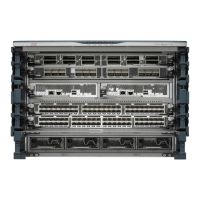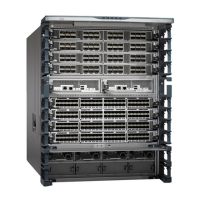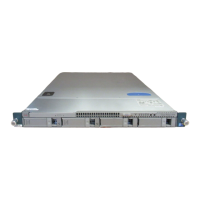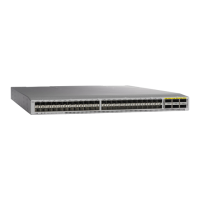Send document comments to nexus7k-docfeedback@cisco.com.
15-11
Cisco Nexus 7000 Series NX-OS Unicast Routing Configuration Guide, Release 4.x
OL-20002-02
Chapter 15 Managing the Unicast RIB and FIB
Managing the Unicast RIB and FIB
Note You must be in the default VDC to configure dynamic TCAM allocation.
To disable dynamic TCAM allocation, use the following command in any mode:
If Cisco NX-OS sucessfully disables dynamic TCAM allocation, you should see the following message:
switch# re-alloc is underway: TCAM re-allocation is underway. Check status for completion.
If Cisco NX-OS cannot disable dynamic TCAM allocation, you should see the following message:
switch# static is not possible: Current usage exceeds static allocation limits.
See the “Returning the TCAM to Default Settings” section on page 15-11 for guidelins on how to lower
TCAM usage below the default allocation limits.
Returning the TCAM to Default Settings
You must return the TCAM to default settings before you can start a nondisruptive downgrade to Cisco
NX-OS release earlier than Cisco NX-OS 4.2(1).
If you attempt a nondisruptive downgrade, the downgrade may fail with the following error:
TCAM allocation has changed.
You need to return the TCAM to default settings to continue the nondisruptive downgrade.
Note Use these steps as a guideline. You must plan for reducing the route updates to the TCAM from neighbor
routers.
BEFORE YOU BEGIN
Ensure that you are in the default VDC (or use the switchto vdc command).
SUMMARY STEPS
1. show hardware forwarding dynamic-allocation status
2. show hardware capacity | begin TCAM
3. Reduce route updates from neighbor routers until TCAM usage is below the default allocation.
4. hardware forwarding dynamic-allocation disable
Command Purpose
hardware forwarding
dynamic-allocation disable
Example:
switch# hardware forwarding
dynamic-allocation disable
Disables dynamic TCAM allocation. This command
returns the TCAM to the default allocation only if there
are no route entries in the reallocated The default is
enabled.
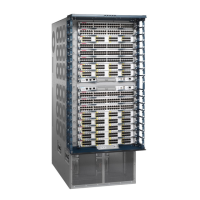
